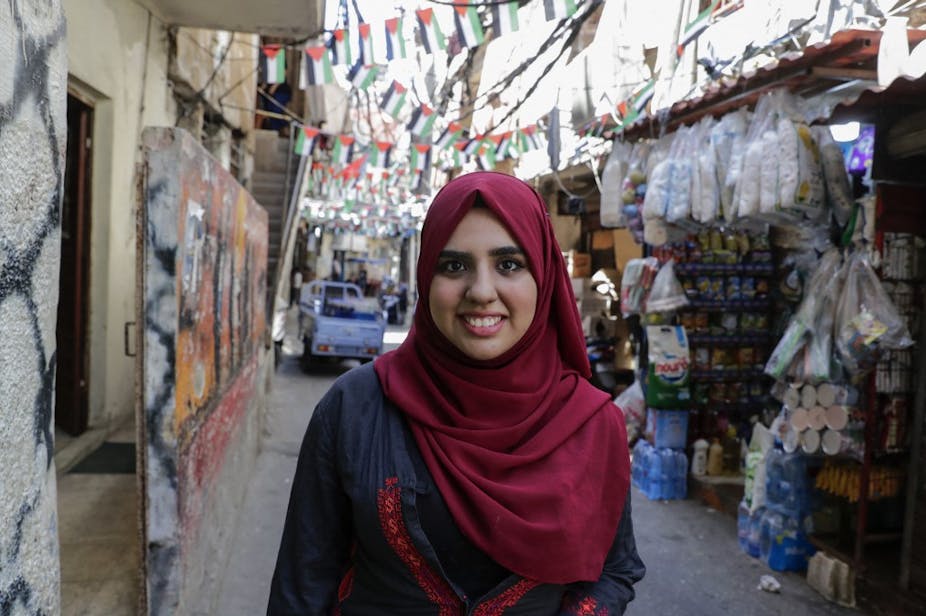In May, following violence in Jerusalem, hundreds of third and fourth generation Palestinian refugees tried to cross the Lebanon-Palestine border that separates them from their homeland to join the popular civil resistance and support their families against Israeli occupation. In the camps, refugees organised sit-ins, marches and various demonstrations of support for the other Palestinians, including on social media.
For Palestinians, trying to get across the border is always a risky, unauthorised journey. It is monitored on Israel’s side by Israeli forces, who have been known to fire on those who get too close, and on the Lebanese side by the United Nations Interim Force in Lebanon (UNIFIL) and the Lebanese army.
The Lebanese army eventually closed all roads leading to the border and set up checkpoints to prevent more protesters from reaching Palestine.
A great number of these protestors were young Palestinians, who are the victims of violence, discrimination, abuse of power and social injustice from the Lebanese state, and who are also neglected by Palestinian factions.
They form a large part of the Palestinian community in Lebanon, which numbers between 260,000 and 280,000, and of whom 50% are under the age of 25, while 28% are between 25 and 34 years old. They seize every opportunity to try to change their daily reality: for example, they have risen up multiple times against decision from Lebanon’s Minister of Labour to treat Palestinian refugees as foreigners.
These protests quickly crystallised into a social movement demanding civil rights. This youth movement made its voice heard once again in 2020, in the context of the Covid-19 pandemic.
Conscientization
To help understand the motivation of these young people who protest their circumstances and those of their families back home, it’s useful to turn to the concept of conscientization, developed in Brazil by Paolo Freire. According to Freire, conscientization is
“a process in which people, as learners rather than passive recipients, deepen the consciousness that they have of both the socio-cultural reality that shapes their lives and their ability to transform that reality”.
Freire identifies four different levels of consciousness: magical consciousness, naïve consciousness, critical consciousness, and political consciousness. Each level is in turn split into four “processes or indicators” (attitudes, explanations, actions, societal projects). An individual cannot exclusively exist at one single level of consciousness – the indicators for each category, used to place individuals on the grid, refer to a variety of different spheres in a person’s life.
As a demonstration of this idea, let’s take the example of different levels of consciousness between two groups of Palestinians.
Throughout all my years of research with Palestinian young people in Lebanon, I have observed a gap between reflection and practice at each level of consciousness. Critical consciousness is characterised by feelings of dissatisfaction and injustice, and opposition to groups considered to be dominant, starting with nationalist, Islamist Palestinian factions that don’t defend them, and Lebanese parties that enact discriminatory laws.
These young people identify many problems with the Lebanese and Palestinian political systems, and challenge their very essence. The first considers them foreigners, and subjects them to many restrictions in terms of their right to work and to own property, without taking into account their specificities as stateless people having sought refuge in Lebanon. The second deprives the youth of true, effective political representation and does not protect them from the Lebanese state.
In short, these young Palestinians have formulated a rational, articulate analysis of their political situation. Their reflections may be a critical level of consciousness, or even a political one, depending on each individual’s political socialisation.
However, when it comes to action, their level of consciousness is often – in Freire’s words – “magical”, due to their lack of faith in the possibility of change. This fatalism is the fruit of a historic and sociological situation, linked to their exile. On top of this, two negative attitudes are common – indifference, experienced as a break with the system, and a kind of justification of institutions, which goes hand in hand with accepting them.
As for indicators of critical consciousness, they are seen in protests, mobilisations, demands for rights, occasional rioting and breaking with the systems that humiliate them. This rioting is also sometimes directed against American, European, or Israeli politicians, as seen in the most recent uprising.
By belonging to parties that oppose the Israeli political system or refusing to participate in said system, Palestinians living in Israel have more of a critical level of consciousness. Their actions aim to correct the problems in the system, while consolidating solidarity that is separate to their Arab and Palestinian identity.
With recent events in Jerusalem, these young Palestinian citizens of Israel have gone from critical consciousness to political consciousness. Even if this new level of consciousness is suppressed, it will find the time and place to manifest again. The international community, Israeli government and Palestinian political parties must provide space for these young people to speak out and be understood.
This article is published as part of IPEV Live, Transition from Violence: Lessons from the MENA, a series of eight online discussions, every Tuesday from 18 May to 29 June 2021.
Translated from the French by Rosie Marsland for Fast ForWord.


